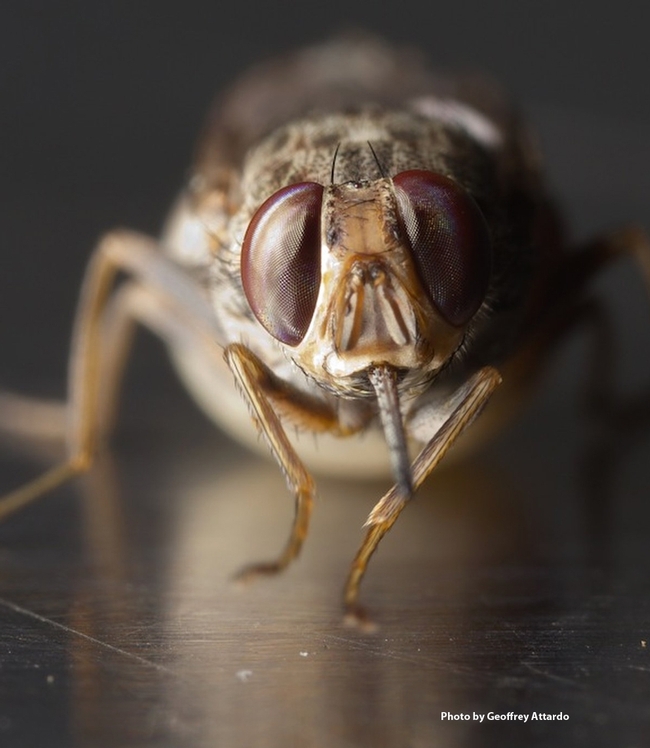
The blood-sucking insect, which transmits the parasite that causes human and animal trypanosomiasis, has wreaked havoc in African countries.
It's distinguished from other Diptera by unique adaptations, "including lactation and the birthing of live young," says medical entomologist-geneticist Geoffrey Attardo, assistant professor, UC Davis Department of Entomology and Nematology.
Mark your calendar.
The UC Davis Department of Animal Science is hosting his seminar, “Tsetse Fly Reproduction: Exploration of the Unique Reproductive Adaptations of a Neglected Disease Vector” at 12:10 p.m., Monday, Oct. 7 in the Weir Room, 2154 Meyer Hall.
"Tsetse flies function as the sole vectors of human and animal Trypanosomiasis in sub-Saharan Africa," Attardo says in his abstract. "In addition to their role as disease vectors, tsetse flies distinguish themselves from other flies in terms of their amazing physiological adaptations. Of these adaptations, the reproductive biology/physiology of these flies stands out as one of the most dramatic."
"Female tsetse flies carry their young in an adapted uterus for the entirety of their immature development and provide their complete nutritional requirements via the synthesis and secretion of a milk like substance. Tsetse milk is derived of roughly 50 percent lipids and 50 percent proteins. Tsetse milk proteins are coded for by repurposed genes and by genes specific to tsetse flies. These genes are regulated in tight correlation with the female's pregnancy cycle. In addition, tsetse flies have established an obligate relationship with the bacterial symbiont Wigglesworthia glossinidius. This symbiont is required for lactation and larval development. Metabolic analysis of tsetse flies lacking this symbiont reveals a tightly integrated relationship between these organisms. This relationship is required for the metabolism of blood, production of essential micronutrients and synthesis/secretion of lipids essential for milk production.”
Attardo led landmark research published Sept. 2 in the journal Genome Biology that provides new insight into the genomics of the tsetse fly. The researchers compared and analyzed the genomes of six species of tsetse flies. Their research could lead to better insights into disease prevention and control.
“It was a behemoth project, spanning six to seven years,” said Attardo. “This project represents the combined efforts of a consortium of 56 researchers throughout the United States, Europe, Africa and China.” (See news story.)
In 1995, the World Health Organization (WHO) estimated that 60 million people were at risk of sleeping sickness, with an estimated 300,000 new cases per year in Africa, and fewer than 30,000 cases diagnosed and treated. Due to increased control, only 3796 cases were reported in 2014, with less than 15,000 estimated cases, according to WHO statistics.
WHO says that the parasitic disease “mostly affects poor populations living in remote rural areas of Africa. Untreated, it is usually fatal. Travelers also risk becoming infected if they venture through regions where the insect is common. Generally, the disease is not found in urban areas, although cases have been reported in suburban areas of big cities in some disease endemic countries.”
Attached Images:
